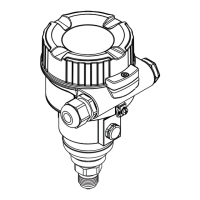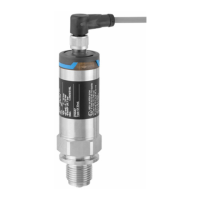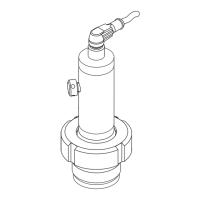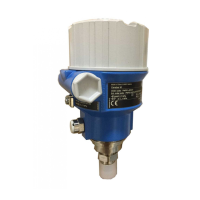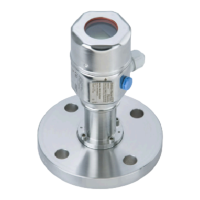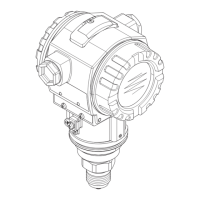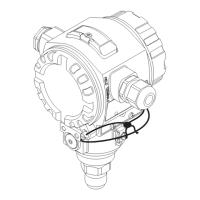Cerabar PMC11, PMC21, PMP11, PMP21
8 Endress+Hauser
Function and system design
Measuring principle -
process pressure
measurement
Devices with ceramic process isolating diaphragm (Ceraphire
®
)
The ceramic sensor is an oil-free sensor, i.e. the process pressure acts directly on the robust ceramic
process isolating diaphragm and causes it to deflect. A pressure-dependent change in capacitance is
measured at the electrodes of the ceramic substrate and the process isolating diaphragm. The
measuring range is determined by the thickness of the ceramic process isolating diaphragm.
Advantages:
• Guaranteed overload resistance up to 40 times the nominal pressure
• The ultrapure 99.9% ceramic (Ceraphire
®
, see also "www.endress.com/ceraphire") ensures:
– Extremely high chemical durability
– High mechanical durability
• Can be used in absolute vacuum
• Small measuring ranges
A0020465
1 Air pressure (gauge pressure sensors)
2 Ceramic substrate
3 Electrodes
4 Ceramic process isolating diaphragm
Devices with metallic process isolating diaphragm
The process pressure deflects the metal process isolating diaphragm of the sensor and a fill fluid
transfers the pressure to a Wheatstone bridge (semiconductor technology). The pressure-dependent
change in the bridge output voltage is measured and evaluated.
Advantages:
• Can be used for high process pressures
• Fully welded sensor
• Slim, flush-mounted process connections available
A0016448
1 Silicon measuring element, substrate
2 Wheatstone bridge
3 Channel with fill fluid
4 Metal process isolating diaphragm
Measuring system
A complete measuring system comprises:

